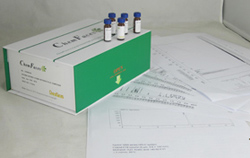Hot Products



| Catalog No. | Information |
| CFN90706 | Pennogenin Pennogenin steroidal saponins could be utilized to develop anticancer medicines. |
| CFN90869 | Pennogenin 3-O-beta-chacotrioside |
| CFN92034 | Peonidin chloride Peonidin chloride has antioxidant activity. Peonidin has show potent inhibitory and apoptotic effects on cancer cells in vitro, notably metastatic human breast cancer cells. |
| CFN91868 | Peonidin-3,5-O-diglucoside chloride Reference standards. |
| CFN92047 | Peonidin-3-O-arabinoside chloride Peonidin-3-O-arabinoside chloride has antioxidant activity. |
| CFN92045 | Peonidin-3-O-galactoside chloride Peonidin-3-O-galactoside chloride has antioxidant activity. |
| CFN92046 | Peonidin-3-O-glucoside chloride Peonidin-3-O-glucoside chloride has antioxidant activity, is a radical scavenger. |
| CFN91869 | Peonidin-3-O-rutinoside chloride Reference standards. |
| CFN90862 | Perillen Perillen is a nartural product from Perilla frutescens. |
| CFN93581 | Perillyl alcohol Perillyl alcohol has potential chemopreventive, and antileukemia activities, it can suppress antigen-induced immune responses in the lung, it could be a novel preventive or therapeutic option for immunologic lung disorders such as asthma with minimal side effects. Perillyl alcohol can suppress antigen-induced immune responses in the lung, it could be a novel preventive or therapeutic option for immunologic lung disorders such as asthma with minimal side effects. |